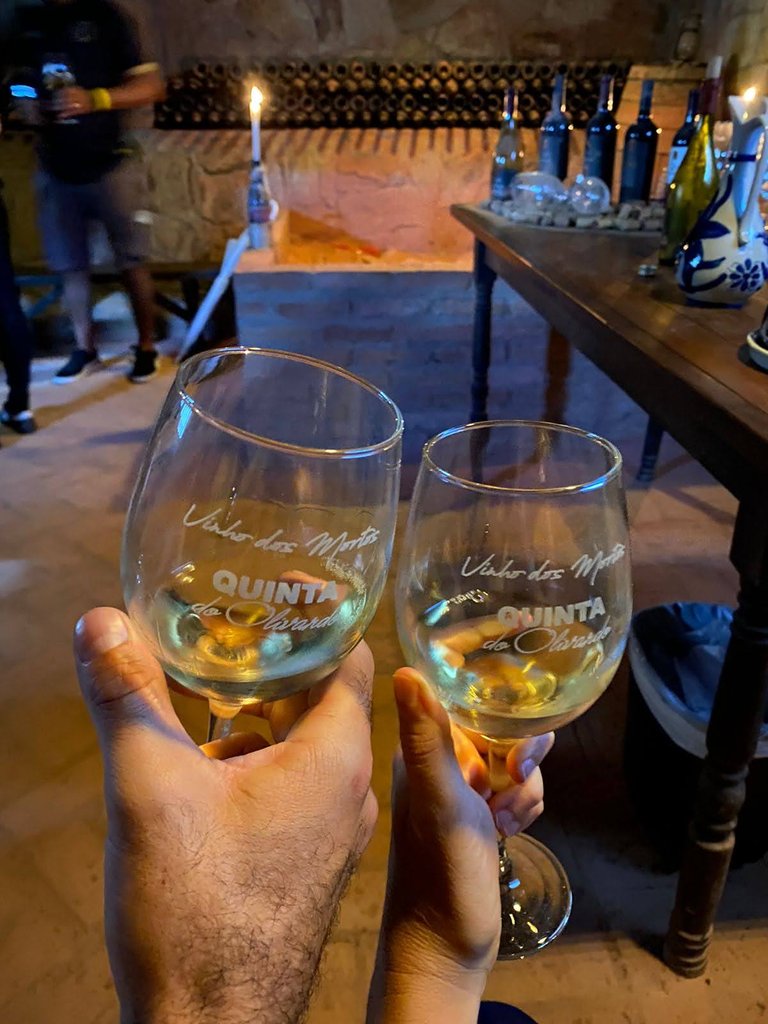
Cheers my friends of Hive! Let me show you a bit of São Roque, a small town famous for its wine route
Many people don't know, but Brazil also produces good wines. Traditionally, the most famous wineries in the country are located in the south region. As in the past there was a great immigration of Italians to the south and the climate is very favorable for the production of grapes, the best Brazilian wines usually come from the south. But this does not mean that there are no other regions that produce good wines. An example of this is the city of São Roque, which became known as the "Wine Route". Since it is very close to my hometown, I went there to visit and, of course, to drink some wine too!
Muita gente não sabe, mas no Brasil também são produzidos bons vinhos. Tradicionalmente, as vinícolas mais famosas do país ficam localizadas na região sul. Como no sul houve uma grande imigração de italianos no passado e o clima é bastante favorável para a produção de uvas, os melhores vinhos brasileiros costumam vir do sul. Mas, isso não quer dizer que não existam outras regiões que produzem bons vinhos. Um exemplo disso é a cidade de São Roque, que ficou conhecida pela “Rota do Vinho”. Como ela é bem próxima da minha cidade natal, fui fazer uma visita e, claro, tomar uns vinhos também!
Last week, my friend @casagrande told me a bit about his experience harvesting grapes on his family's property! I really wanted to go out there and pick some grapes, but since he lives far away, I ended up staying with the grapevines here in the state of São Paulo.
Na semana passada, meu amigo @casagrande contou um pouco sobre a experiência dele na colheita das uvas em uma propriedade da sua família! Fiquei com bastante vontade de sair por aí colhendo umas uvas, mas como ele mora muito longe, acabei ficando mesmo com as videiras aqui do estado de São Paulo.
The Wine Route
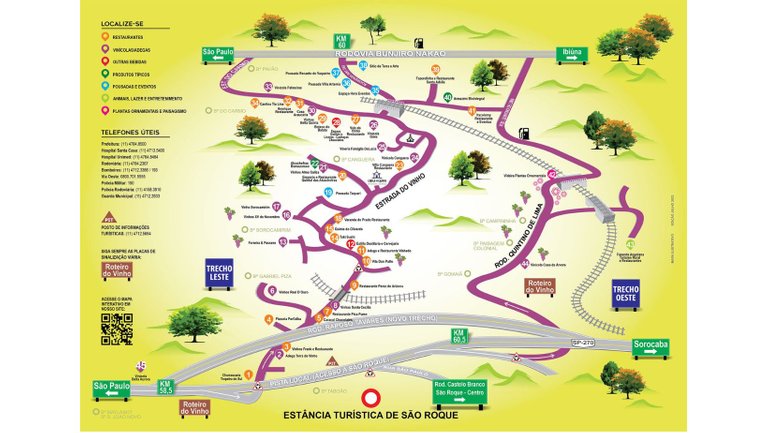
The history of the Wine Route began around the XVII century, when Pero Vaz de Barros, founder of the city of São Roque, saw in that region an opportunity to plant grapes and produce wine.
Besides grapes, the region is famous for the cultivation of artichokes. That is why, in addition to tasting good wines, those who visit the route will find several restaurants with dishes based on this vegetable that I am in love with!
The Wine Route is formed by three small roads that cross each other. Along them are about 30 establishments among wineries, restaurants, and stores where you can stop and taste not only wines but also cheeses and sweets from the region.
Like me, most people end up visiting the region by car. In this case, the driver will be a little bit uncomfortable and will not be able to taste the wines!
A história da Rota dos Vinhos começou por volta do século XVII, quando Pero Vaz de Barros, fundador da cidade de São Roque viu naquela região uma oportunidade para plantar uvas e produzir vinho. Além das uvas, a região é famosa pelo cultivo das alcachofras. Por isso, além de degustar bons vinhos, quem visita a rota encontra diversos restaurantes com pratos a base desse legume que eu sou apaixonada! A Rota do Vinho é formada por três pequenas estradas que se cruzam. Ao longo delas ficam cerca de 30 estabelecimentos entre vinícolas, restaurantes e lojas onde é possível parar e degustar não só vinhos, como também queijos e doces da região.Assim como eu, a maioria das pessoas acaba visitando a região de carro. Nesse caso, o motorista vai passar um pouco de vontade e não poderá provar os vinhos!
Choosing the wineries
In total there are 14 wineries open to visitation, so it is practically impossible to visit all of them in a single day. As we only had Saturday for sightseeing, we chose four of them to visit, taste wines and enjoy.
No total são 14 vinícolas abertas para a visitação, por isso, em um único dia fica praticamente impossível conhecer todas. Como só tínhamos o sábado para passear, aproveitamos e escolhemos 4 delas para conhecer, degustar vinhos e aproveitar.
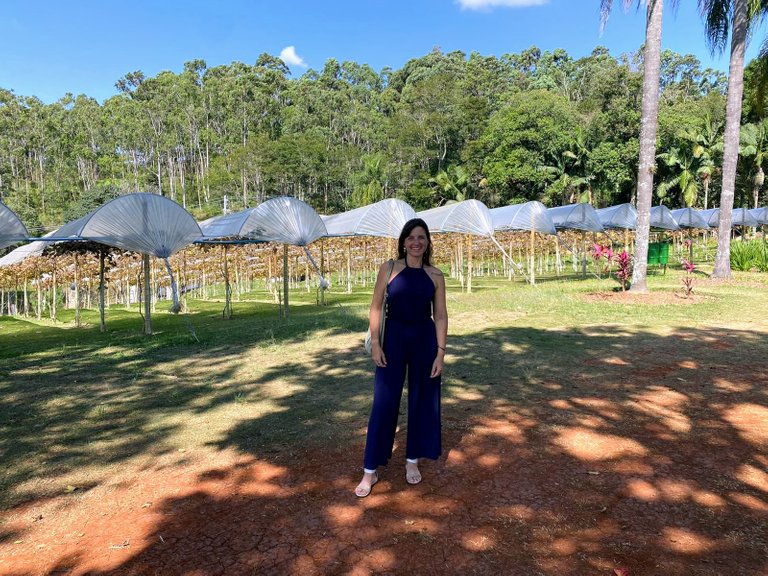
visiting the grape plantation is also part of the weekend program
Villa Don Patto
Villa Don Patto is one of the biggest and most famous wineries in the Wine Route. It has a store, a brewery, a bakery, an ice cream parlor, and different restaurants specializing in Italian and Portuguese cuisine. This is such a large winery that if you want, you can spend the whole day there.

The cafe inside Don Patto
Although it has many attractions, Don Patto is one of the most visited wineries on the Wine Route, and for this reason it is usually very crowded. It is worth the visit, especially to buy some bottles and also to taste wines, but for lunch, instead of waiting in line for hours, it is better to look for other wineries and restaurants in the region.
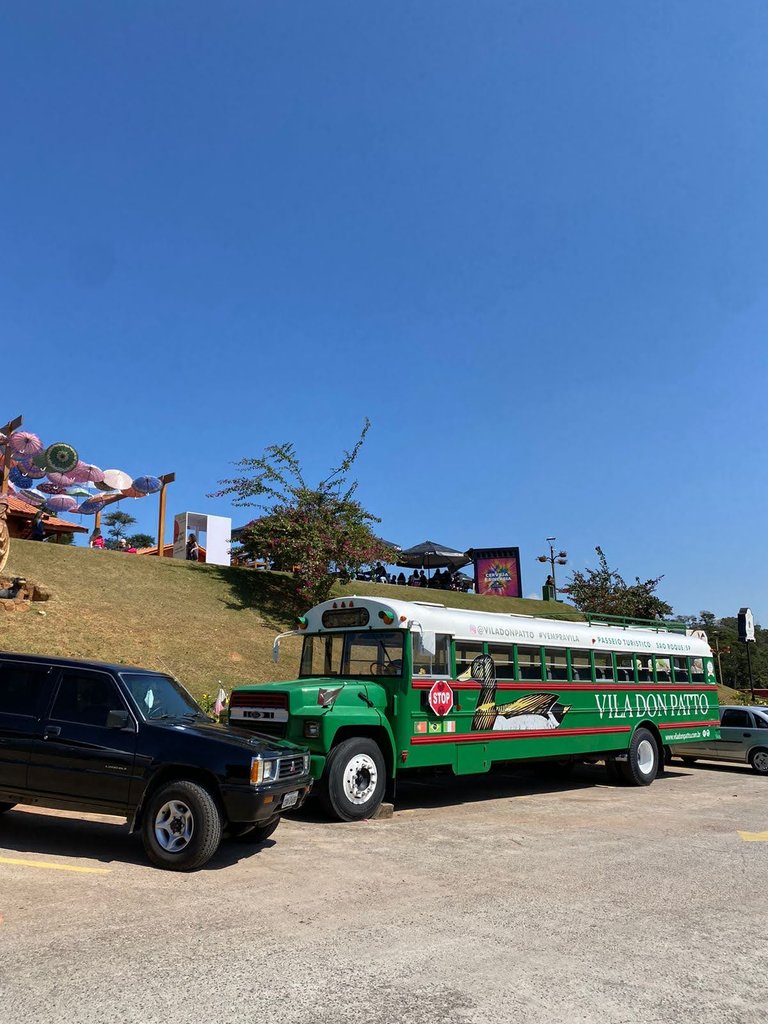
They have a bus inside the winery to take tourists for a tour
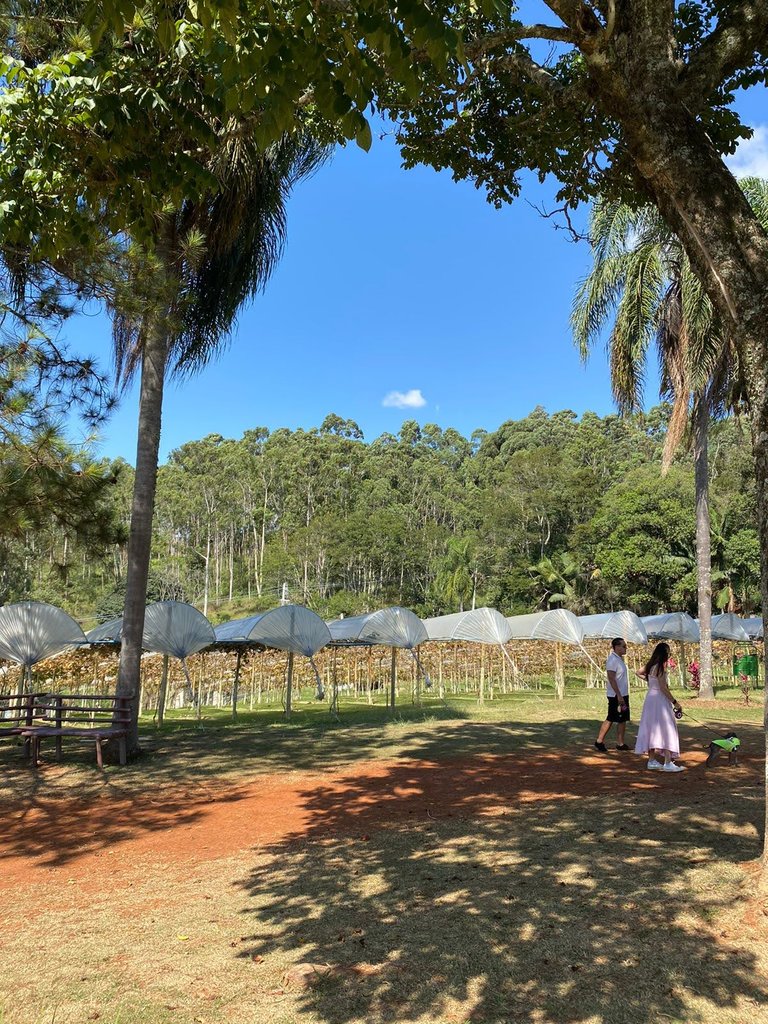
The grapes
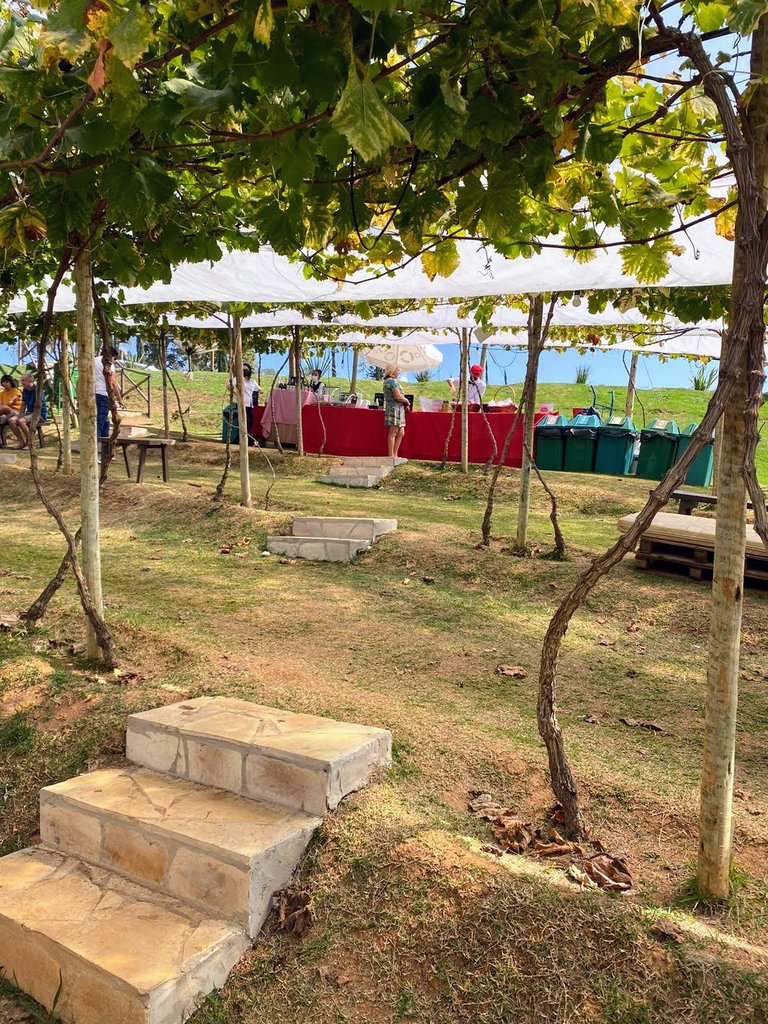
They have this nice place where you can taste some wine under the grape trees

One of the restaurants

I love these hammocks! you can drink a lot of wine and then take a nap!
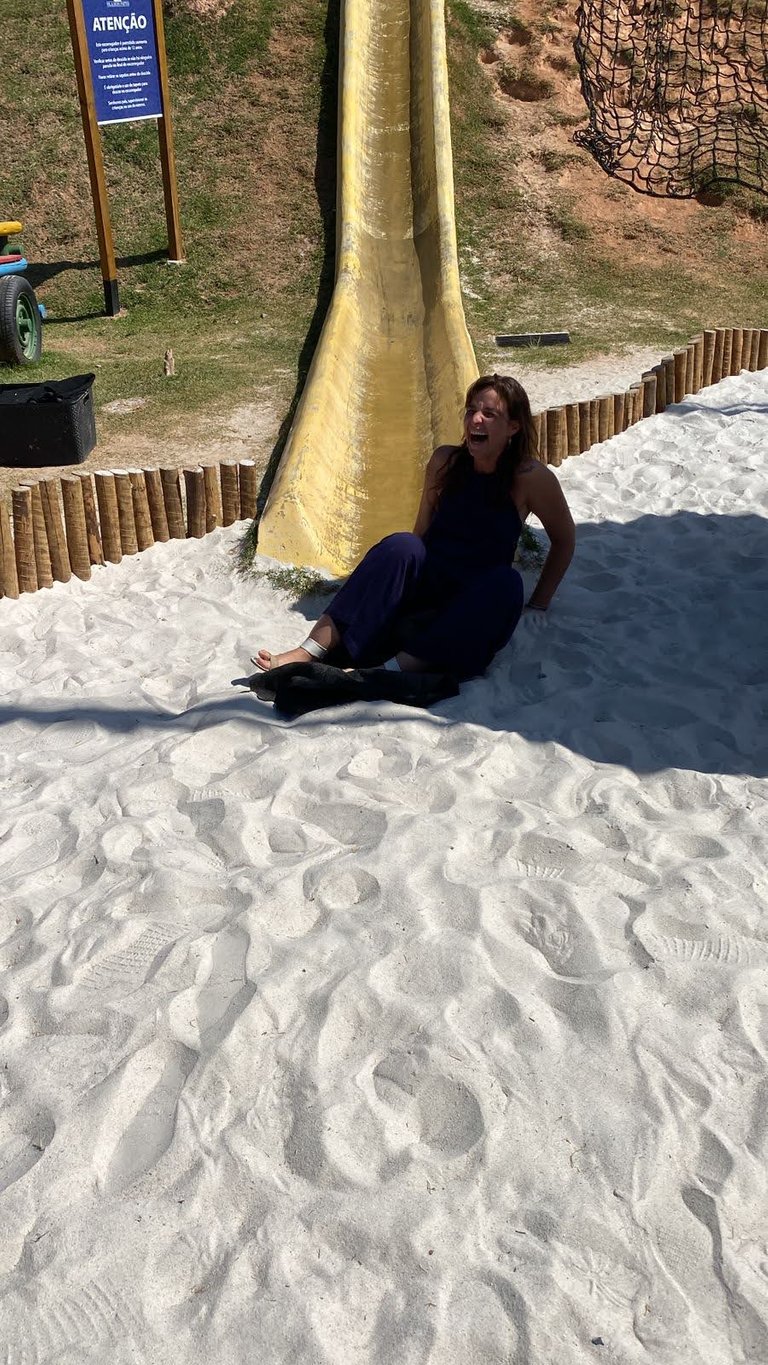
Having some fun!
For those who like to buy wines, Don Patto offers a huge variety of wines for all pockets and tastes. The production, however, is not local. A good part of the production is located in southern Brazil and also in Chile.
For those who have children, this is a very nice place to visit. The winery has a whole structure for the little ones and also for the big ones who like to go on a slide, as I did! It was good to have some laughs!
A Villa Don Patto é uma das maiores e mais famosas vinícolas da Rota do Vinho. Ela possui loja, uma cervejaria, padaria, sorveteria e diferentes restaurantes especializados em gastronomia italiana e portuguesa. Essa é uma vinícola tão grande que se você quiser, você pode passar o dia todo lá. Embora tenha muitas atrações, a Don Patto é uma das vinícolas mais visitadas da Rota do Vinho e, justamente por isso, ela costuma ficar bem cheia. Vale a visita,especialmente para comprar algumas garrafas e também degustar vinhos, porém, para almoçar, em vez de aguardar horas na fila, vale mais procurar outras vinícolas e restaurantes da região.Para quem gosta de comprar vinhos, na Don Patto é possível encontrar uma enorme variedade de vinhos para todos os bolsos e gostos. A produção, no entanto, não é local. Boa parte da produção fica localizada no sul do Brasil e também no Chile. Para quem tem crianças, lá é um lugar bem bacana de se visitar. A vinícola tem toda uma estrutura para os pequenos e também para os grandes que gostam de ir a um escorregador, como é o meu caso! Foi bom dar umas risadas!
XV de Novembro
XV de Novembro is another very large and well-known winery in São Roque. Besides the vines, it also has an extensive artichoke plantation. Inside the winery there is a restaurant and also a small museum, which I enjoyed very much. There are numerous utensils that were used in the old days for the production of wine, from harvesting to bottling. Understanding all this manual process of production is very interesting and also impressive since some of the processes were designed in a very intelligent way!
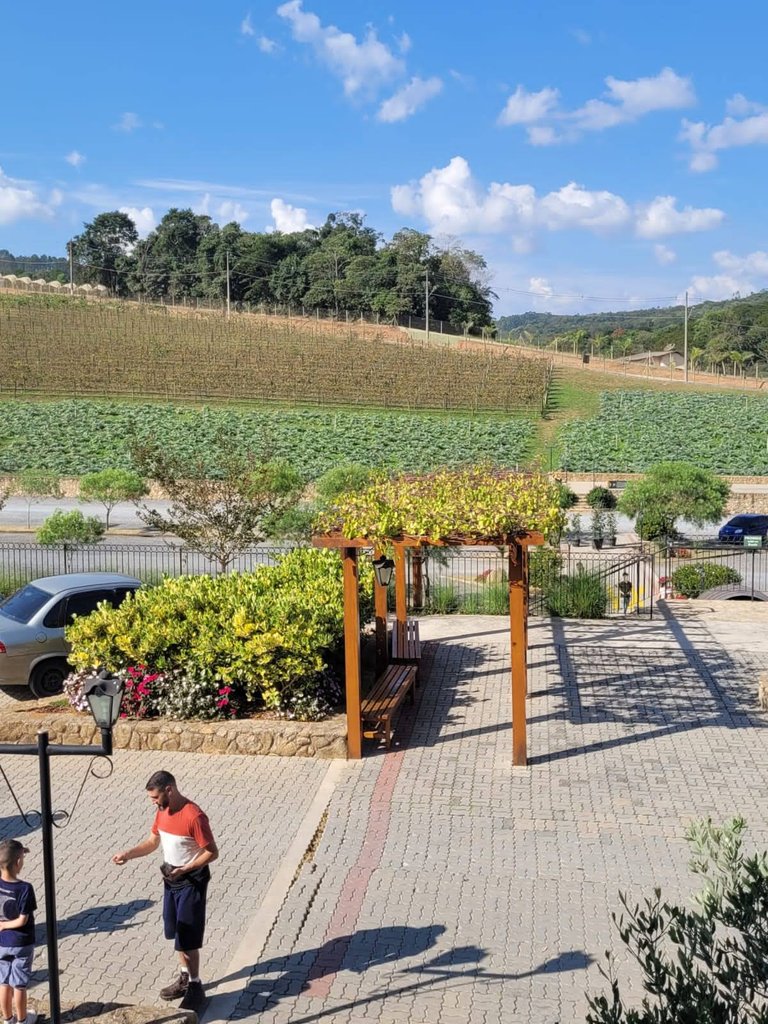
Plantation of Grapes and Artichokes
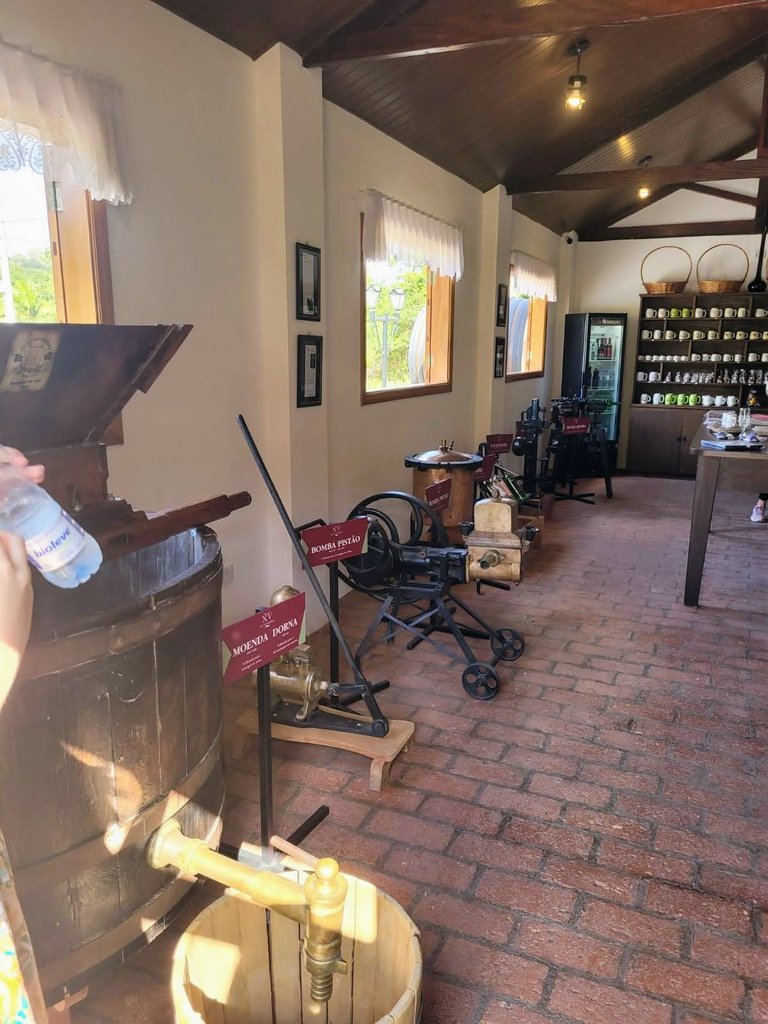
The little museum
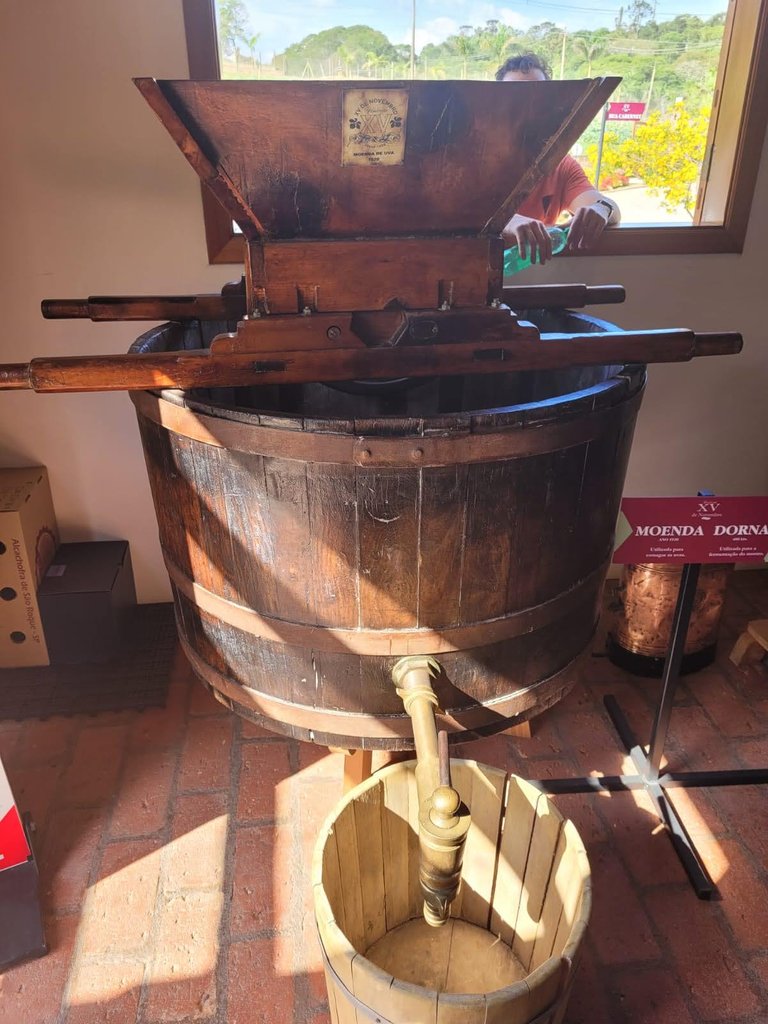
Old grape mill
A XV de Novembro é outra vinícola bem grande e conhecida de São Roque. Além das videiras, ela também possui uma extensa plantação de alcachofras. Dentro da vinícola há um restaurante e também um pequeno museu, que eu gostei bastante de conhecer. Lá existem inúmeros utensílios que eram utilizados antigamente para a produção de vinho, desde a colheita até o engarrafamento. Entender todos esse processo manual de produção é muito interessante e também impressionante já que alguns processos foram desenhados de forma muito inteligente!
Alma Galiza
Of all the wineries we visited, without a doubt, Alma Galicia was my favorite! It is a very small winery, whose proposal is to mix a little of the Spanish culture with Brazil. Besides high quality wines, the winery also produces some delicious cheeses.
There is also a small restaurant there that serves delicious dishes. I had a vegetarian artichoke paella that was simply sensational! Besides that, we were able to taste several wines before choosing the one that goes best with our dish, and we also tasted some cheeses. I felt very rich, I must confess...
The people at the winery are super friendly and I left there very satisfied and with a full belly!
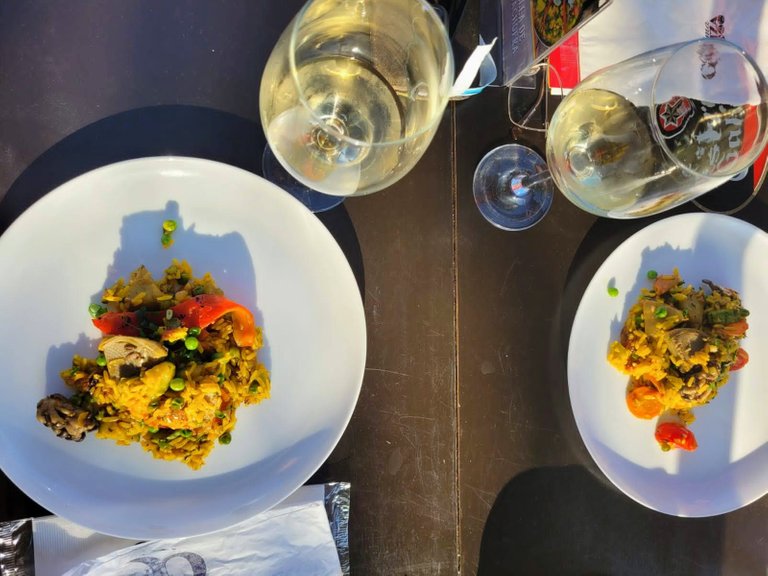
This paella was simply amazing!
De todas as vinícolas que visitamos, sem dúvida, a Alma Galiza foi a minha favorita! Ela é uma vinícola bem pequenininha, cuja proposta é misturar um pouco da cultura espanhola com o Brasil. Além de vinhos de altíssima qualidade, na vinícola são produzidos alguns queijos deliciosos. Lá também funciona um pequeno restaurante que serve pratos deliciosos. Comi uma paella vegetariana de alcachofra que estava simplesmente sensacional! Além disso, pudemos provar diversos vinhos antes de escolher aquele que harmoniza melhor com o nosso prato, além de provar uns queijos também. Eu me senti muito rica, devo confessar… O pessoal da vinícola é super simpático e saí de lá muito satisfeita e com a barriga cheia!
Quinta do Olivardo
The last winery I visited was Quinta do Olivardo, which is also one of the most famous on the Wine Route. This winery was one of the first to be established in the region, thanks to the entrepreneurial vision of Mr. Olivardo, the owner. Son of very poor parents, he was employed in a winery. In 2007 he lost his job and decided to buy some land and start planting grapes near the road. With the grapes, Mr. Olivardo started to produce wines that were not very good, but his wife made a delicious codfish cake, which ended up attracting visitors both to taste the cake and to drink wine.
From this, he invested in setting up a restaurant that had only 4 tables. Today, Mr. Olivardo owns the winery and his establishment serves about 5 thousand people on weekends.
Inside the winery, we took the opportunity to taste the wine of the dead, which was very interesting!
A última vinícola que visitei foi a Quinta do Olivardo, que também é uma das mais famosas da Rota do Vinho. Essa vinícola foi uma das primeiras a se instalar na região, graças à visão empreendedora do Senhor Olivardo, o dono. Filho de pais muito pobres, ele era empregado em uma vinícola. Em 2007 perdeu seu emprego e decidiu comprar algumas terras e começar a plantar uvas próximo da estrada. Com as uvas, o Senhor Olivardo começou a produzir vinhos que não eram lá muito bons, porém sua esposa fazia um delicioso bolinho de bacalhau, que acabava atraindo visitantes tanto para degustar o bolinho, como também beber vinho. A partir disso, ele investiu para montar um restaurante que tinha apenas 4 mesas. Hoje, o Senhor Olivardo é dono da vinícola e seu estabelecimento atende cerca de 5 mil pessoas nos finais de semana.Dentro da vinícola, aproveitamos para fazer a degustação do vinho dos mortos que foi bem interessante!
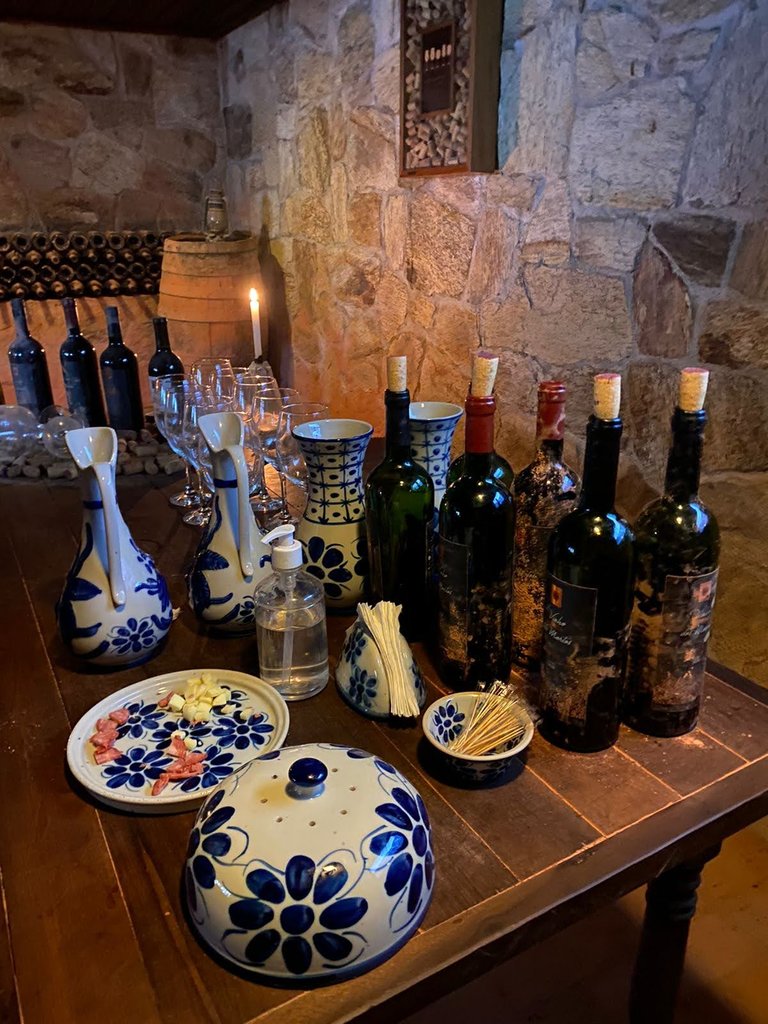
taste the wine of the dead
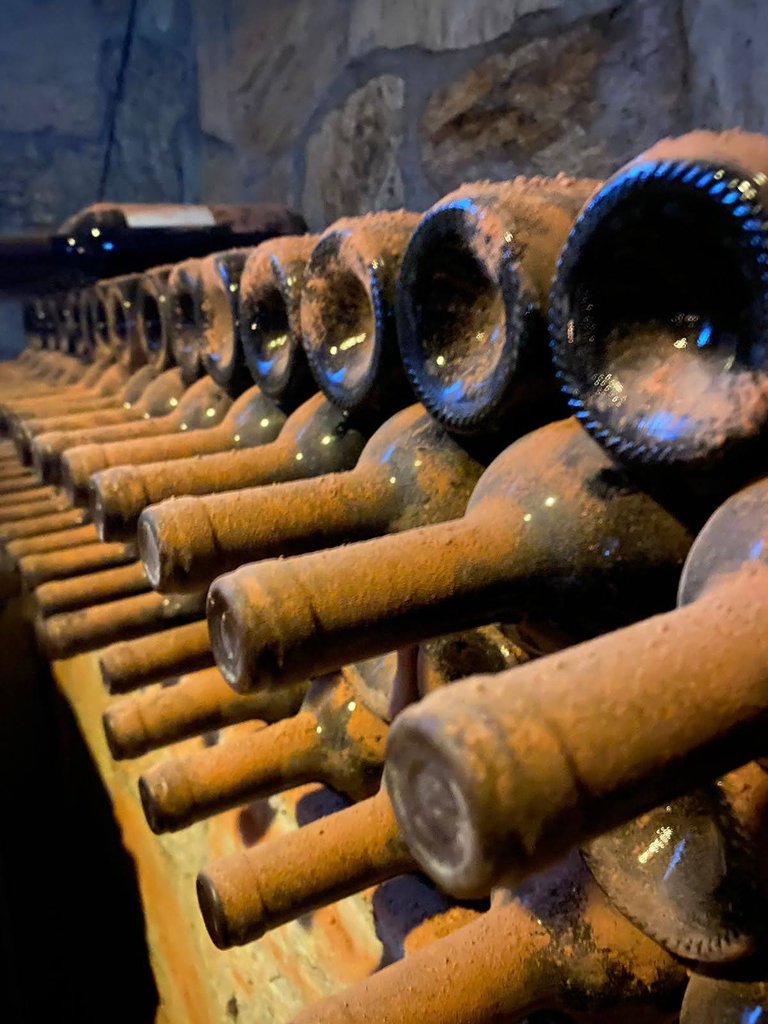
buried wines to taste
Tasting the wine of the dead
Around 1807, Portugal was invaded by Napoleon Bonaparte's troops. As a strategy to protect their property, the Portuguese started to bury their belongings, among them, bottles of wine. As the French left the territory, the Portuguese returned to their homes and began to dig up their belongings. What they realized, however, was that instead of spoiled, the wines were even better.
From then on, Portugal began to adopt this practice, calling those wines buried before consumption the "wine of the dead. However, it is not only in Portugal that the wine of the dead exists. At Quinta do Olivardo every year there is a party where people choose and bury their wines to dig them up the following year and celebrate.
To drink the wines that were buried outside the party, it is possible to do a tasting in the house itself and learn a little more about the wines of the region. During the tasting, the wines are paired with cheeses and also cold cuts. And the whole presentation is done in an underground cellar, very interesting!
The most curious thing is that Mr. Olivardo, who brought the tradition of the wine of the dead to São Roque, has never been in Portugal! I found this fact quite funny to tell the truth!
The São Roque Wine Route surprised me a lot and it was very nice to know this region! I think these little trips help us to refresh the soul and are always good to keep the traveling spirit alive, even when we don't go very far!
I hope you enjoyed it!
Thanks for reading and see you next time!
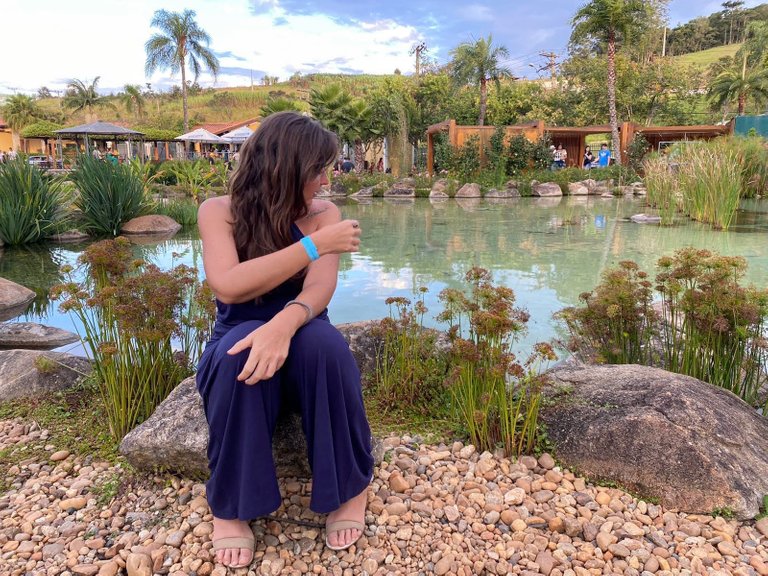
Por volta de 1807, Portugal foi invadido pelas tropas de Napoleão Bonaparte. Como estratégia para protegerem seus bens, os portugueses passaram a enterrar suas coisas, entre elas, garrafas de vinho. Com a saída dos franceses do território, os portugueses voltaram às suas casas e começaram a desenterrar seus pertences. O que eles perceberam, no entanto, é que em vez de estragados, os vinhos estavam ainda melhores. A partir daí, Portugal passou a adotar essa prática, chamando de “vinho dos mortos” aqueles vinhos enterrados antes do consumo. Porém, não é somente em Portugal que o vinho dos mortos existe. Na Quinta do Olivardo todo ano existe uma festa onde as pessoas escolhem e enterram seus vinhos para no ano seguinte irem desenterrá-los e também celebrar. Para beber os vinhos que foram enterrados fora da festa, é possível fazer uma degustação na própria casa e aprender um pouco mais sobre os vinhos da região. Na degustação, os vinhos são harmonizados com queijos e também frios. E toda a apresentação é feita em uma cave subterrânea, bem interessante! O mais curioso da história é que o Senhor Olivardo que trouxe a tradição do vinho dos mortos para São Roque nunca esteve em Portugal! Eu achei esse fato bem engraçado para falar a verdade! A Rota do Vinho de São Roque me surpreendeu bastante e foi muito legal conhecer essa região! Acho que essas pequenas viagens nos ajudam a refrescar a alma e são sempre boas para manter o espírito viajante vivo, mesmo quando não vamos muito longe! Espero que tenham gostado! Obrigada pela leitura e nos vemos na próxima!

Parabéns, seu post foi selecionado pelo projeto Brazilian Power, cuja meta é incentivar a criação de mais conteúdo de qualidade, conectando a comunidade brasileira e melhorando as recompensas, obrigado!
obrigada pelo apoio! <3
Indeed, a place with taste, hehe, and we here in Romania have such wineries that offer you a similar experience, it's so interesting to listen to the oenologist as he explains the wine's journey from the vineyard to picking the grapes, pressing them and putting the magic liquor in barrels made of special wood.
If I'm not mistaken, the barrels used here in western Romania are brought from Brazil.
What a lovely sunflower umbrella😍
The food ,the ambiance was so lovely 😍😍😍😋
I love it too! Thanks for reading and your comment!
Congratulations @helgalubevi! You have completed the following achievement on the Hive blockchain And have been rewarded with New badge(s)
Your next target is to reach 1250 replies.
You can view your badges on your board and compare yourself to others in the Ranking
If you no longer want to receive notifications, reply to this comment with the word
STOPCheck out our last posts:
ha ha future WHALE coming! Wait for more badges for me! Will reach1250 replies very soon...
thanks for the motivation @hivebuzz! we are together on #teamhelgalubeviwhale2024 hahahhahaha
Olha só, já tinha ouvido falar de São Roque, mas não sabia que tinham tantas vinícolas aí também, bom saber 😄 Obrigado por compartilhar 😉
Certeza que as melhores vinícolas estão ai e sem dúvida a rota dos vinhos gaúcha deve dar de 1000 a zero nas nossas! Mas foi uma experiência bem bacana! Vou pro sul ainda conhecer ai! Tá convidado para vir para São Roque!
Digamos que é um pouco maior, mas é ótimo ter esta opção por aí também 😄 Venha mesmo, será um prazer recebê-la 😉
Daily Travel Digest #1826.
Become part of our travel community:
- Join our Discord
- Learn more about our travel application
Hiya, @ybanezkim26 here, just swinging by to let you know that this post made it into our Honorable Mentions in Your post has been manually curated by the @pinmapple team. If you like what we're doing, please drop by to check out all the rest of today's great posts and consider supporting other authors like yourself and us so we can keep the project going!Oh! Thank you so much! Happy to be part of it!
That is a glorious day. I love wine and wineries were always a fun thing. I grew up near the Niagara wineries and it was always fun to drive around the vineyards.
How cool to drink wine that had been buried and dug up. I'm not a connoisseur, but a cheap wine drinking drunk. I would still love to experience those wines. You are very fortunate to have those experiences. Thanks for the awesome tour!
For sure!! Wine and wineries are always fun things! thanks for your comment and reading!
Congratulations, your post has been added to Pinmapple! 🎉🥳🍍
Did you know you have your own profile map?
And every post has their own map too!
Want to have your post on the map too?
I love vineyards and wine tasting. I have never done one with paella though, and one that looks so tasty 🙂 It looks like a place where you can come with your family and have a fun day. I would spend some time in the hammock too 🙂
Thank you for sharing!
Hey hey! Thanks for your comment and reading! Paella and wine are great! Such a nice combination, hammock after eating and drinking is even more perfect hehhehehe